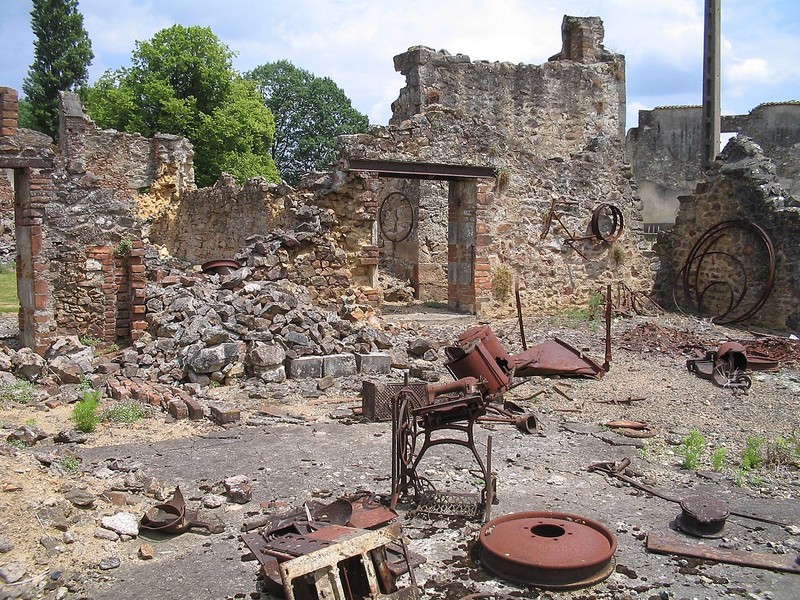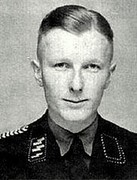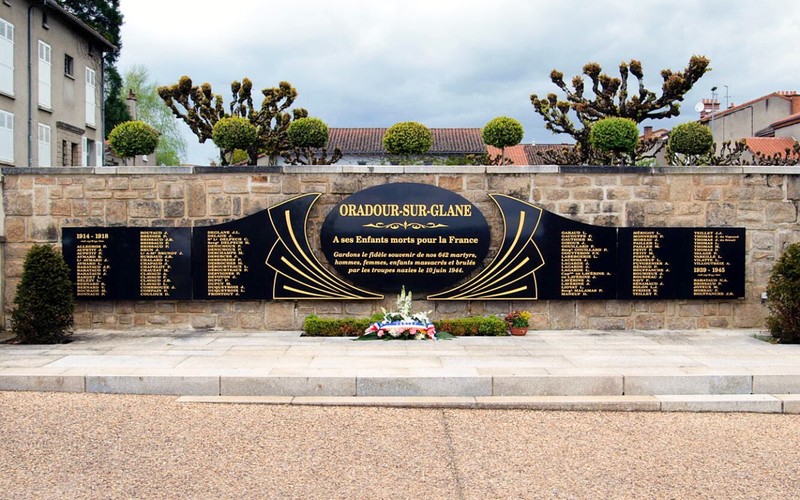Oradour-sur-Glane Memory Center
Introduction
Text-to-speech Audio
Since 1999, this visitor center has served as the starting point for exploring the remains of the historic village that was the site of a massacre by Nazi soldiers against French civilians in retribution for their support of resistance movements. On the 10th of June, 1944. the otherwise scenic and pastoral French village of Oradour-sur-Glane suffered one of the worst single-event civilian massacres in wartime history. With a death toll of over six-hundred men, women, and children, the Massacre at Oradour quickly became one of the most well-known examples of Nazi war crimes against civilians in occupied France. The ruins that remain of that once beautiful town serve as a reminder of the brutality that was suffered under the Third Reich. Under orders of French President Charles de Gaulle, the original village was left as it appeared following the massacre. Survivors and new residents live and work within a completely new community built west of the original village. The ruins serve as a memorial, with this visitor center offering interpretation and supporting preservation efforts.
Images
The broken memories of those massacred at Oradour-sur-Glane

Adolf Diekmann, commander of the 4th SS Panzer Grenadier Regiment

Oradour-sur-Glane, a monument of violence and sorrow

Backstory and Context
Text-to-speech Audio
The village of Oradour-sur-Glane in Nazi-occupied France experienced a horrifying massacre on the tenth of June, 1944, just four days after D-Day. A German Waffen-SS company, seeking retribution for supposed resistance activities in the area and the kidnapping of one of their commanders, Sturmbannfuhrer Helmut Kämpfe, unleashed an unspeakable wave of violence. In this brutal act, 643 civilians, including innocent men, women, and children, as well as passersby, were ruthlessly murdered. The men were shot in the legs, then doused with gasoline and burned alive in barns, while the women and children were corralled into a church that was set ablaze, with those trying to escape through windows being mercilessly gunned down. The village was left in ruins, and after the war, French leaders decided to maintain the site as a place of memory.
Only six individuals managed to escape the massacre, with the last surviving member of the village, Robert Hébras, becoming a human rights activist. The decision was made not to rebuild the village. Instead, a new one was erected nearby after the war. At the same time, the remains of Oradour-sur-Glane were preserved as a solemn memorial and museum, a poignant reminder of the cruelty of the Nazi occupation. President Charles de Gaulle, leader of the French Free Army, played a crucial role in preserving the ruins for this purpose.
The tragic event was triggered by claims that a Waffen-SS officer, Helmut Kämpfe, was being held captive by the French Resistance in Oradour-sur-Glane. Led by Adolf Diekmann, the SS battalion cut off access to the village and executed the heinous atrocity. However, protests against Diekmann's actions followed from various quarters, including Nazi Field Marshal Erwin Rommel and the Vichy Government.
In 1953, a trial was held against the surviving SS men involved in the massacre, resulting in imprisonment for some and the execution of two. Political complications, including demands for autonomy in the region of Alsace, led to the release of some convicted Alsatian former SS men. The last trial of a Waffen-SS member involved in the massacre occurred in 1983, leading to a conviction and life imprisonment for Heinz Barth.
The memory of the tragic events at Oradour-sur-Glane lives on. In 1999, the Centre de la mémoire d'Oradour opened near the village. Acting as a visitor's center and museum space, the Centre has exhibits of personal items recovered from the ruins, including watches stopped at the time of their owners' deaths. Over the years, numerous world leaders, including French presidents Jacques Chirac and François Hollande, and German presidents Gerhard Schröder and Joachim Gauck, have visited the site to pay tribute to the victims and to remember the harrowing atrocities committed during the Nazi occupation.
Sources
Britannica, T. Editors of Encyclopaedia (2023, June 29). Oradour-sur-Glane. Encyclopedia Britannica. https://www.britannica.com/place/Oradour-sur-Glane
Farmer, S. (1999). Martyred Village. The New York Times. https://archive.nytimes.com/www.nytimes.com/books/first/f/farmer-village.html
Olivennes, H. (2013, September 4). German president visits site of Nazi massacre in France. France 24. https://www.france24.com/en/20130904-germany-france-president-pays-historic-visit-french-world-war-2-massacre-site-oradour-sur-glane-nazis
Genzlinger, N. (2023, February 25). Robert Hébras, last survivor of a 1944 massacre in France, dies at 97. The New York Times. https://www.nytimes.com/2023/02/24/world/europe/robert-hebras-dead.html
Dennis Nilsson
https://www.francecomfort.com/en/sights/508/Oradour-sur-Glane
